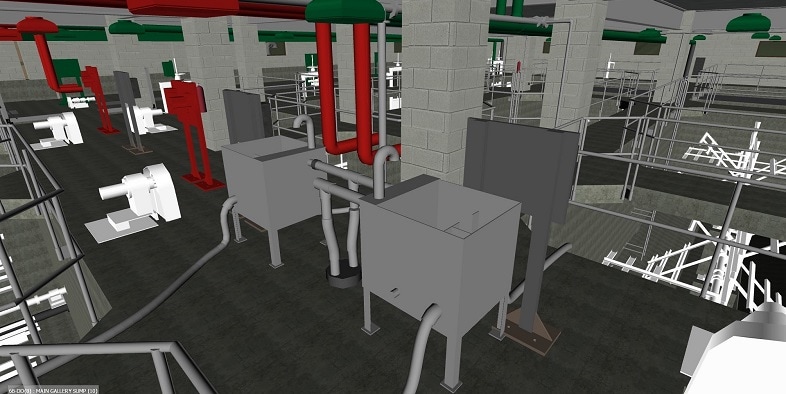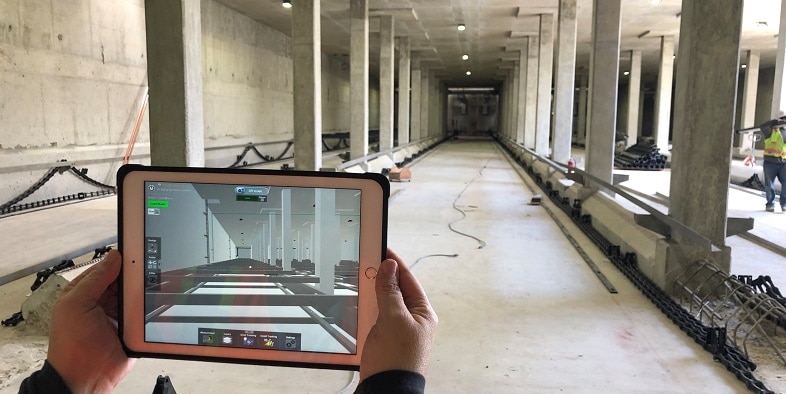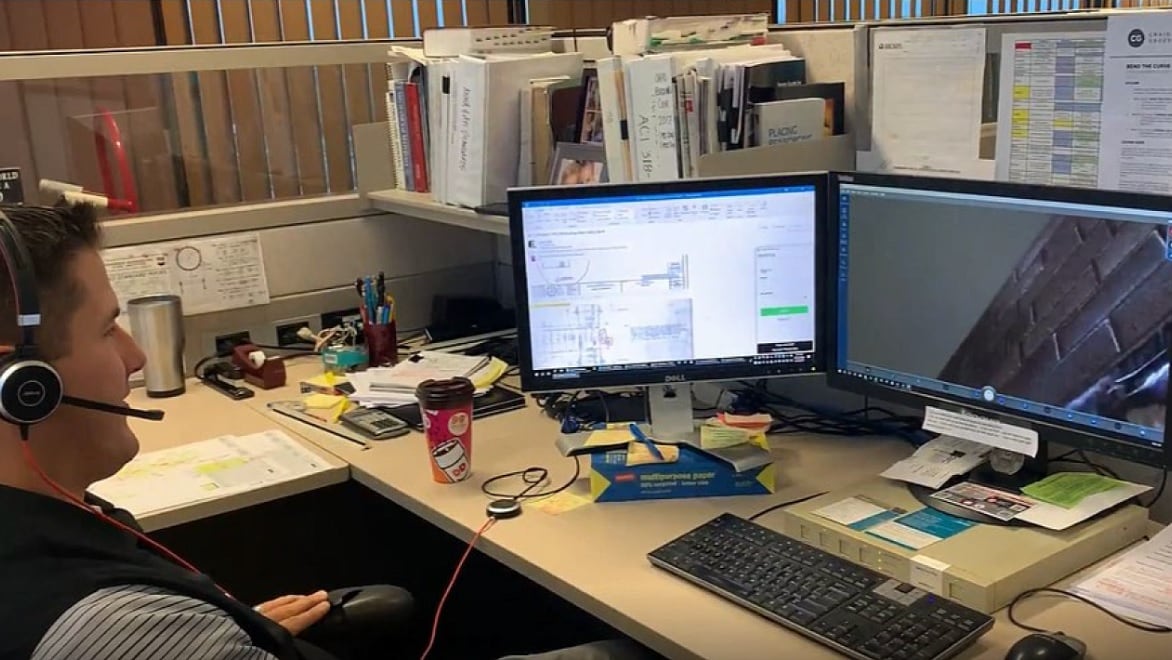ARCADIS
Strengthening water system resilience with BIM and cloud collaboration
The future of making
Share this story
Technology tools boost speed and efficiency for a critical water infrastructure renovation
When the aging water treatment plant serving Toledo, Ohio was overwhelmed by toxic green algae in the summer of 2014, citizens were left without drinkable water for days. In the wake of this emergency, the city turned to global design and engineering consultancy Arcadis to renovate and expand the 80-year-old facility. Using advanced Building Information Modeling (BIM) technology and cloud collaboration, Arcadis designed an upgrade to improve the plant’s resilience and ensure safe water for the community. In the process, the company transformed the way it works.
State of emergency: don’t drink the water
On August 2, 2014, the residents of the midwestern city of Toledo, Ohio, received a “do not drink” advisory from the Ohio Environmental Protection Agency (OEPA). A massive harmful algal bloom (HAB) in Lake Erie had contaminated the city’s water supply with a toxin called microcystin, leaving nearly 500,000 people without usable water. Exposure to toxins from HABs can cause gastrointestinal illness, skin and eye irritation, respiratory issues, and even liver failure. Ohio’s governor declared a state of emergency, and the National Guard and Red Cross set up water distribution centers.
Citizens got the all-clear to resume drinking, cooking, and bathing with tap water after three days. But HABs—which grow during the warmer months in freshwater lakes and reservoirs that cities such as Toledo rely on for water—remain a threat to residents. The city had to seek solutions to ensure a more resilient water system.
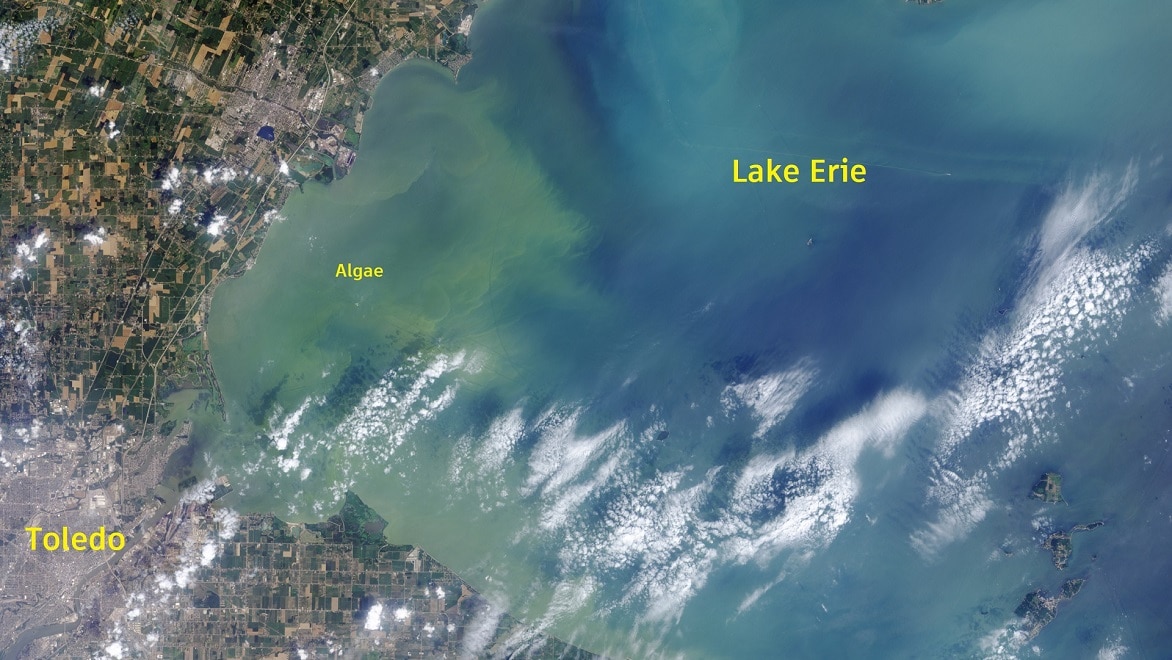
Satellite image of the harmful algal bloom in Lake Erie that contaminated Toledo’s water supply in August 2014. Image courtesy of NASA GFSC.
Expanding Toledo’s water treatment capacity
To secure the safety of the water supply, the OEPA issued mandates to upgrade Toledo’s Collins Park Water Treatment Plant. The city engaged Arcadis—a global design, engineering, and management consultancy with experience designing water facilities around the world—to address the urgent need.
Arcadis would design and oversee construction of two new water basins—adding to the six existing basins that treat 120 million gallons of water per day to make it safe to drink—and upgrade some of the water treatment units in the older part of the plant. “The plan was to add redundancy and capacity so it could better handle the algal toxins,” says Kurt Smith, project manager for Arcadis, to ensure that water customers have no lapse in supply if any of the basins needs repair. New basins 7 and 8, each with a capacity of 20 million gallons per day, would also allow the plant to conduct year-round maintenance.

A rendering of the new basins 7 and 8 on the Collins Park site, shown to the right of the existing facilities in blue.
Tight timelines and a tighter worksite
The Collins Park Water Treatment Plant began operation in 1941 and was expanded in the 1950s. The facility’s original paper plans were obviously outdated. “The record drawings never seem to reflect exactly what's built anyway,” says Julie Nicholson, BIM manager and designer for the water/wastewater environmental-consulting engineering business at Arcadis. “We had to tie into existing plant connections, and it was really critical that we be spot-on.”
The water treatment plant also had to remain operational while the facility was being overhauled. In addition, the Arcadis team had to coordinate across additional upgrade projects on a tight worksite, including a 7,200-volt underground power loop and an ozone system for additional treatment of algal toxins. With an EPA-mandated deadline looming, Arcadis planned to work with five outside sub-consultants—making efficient workflows and communications essential.
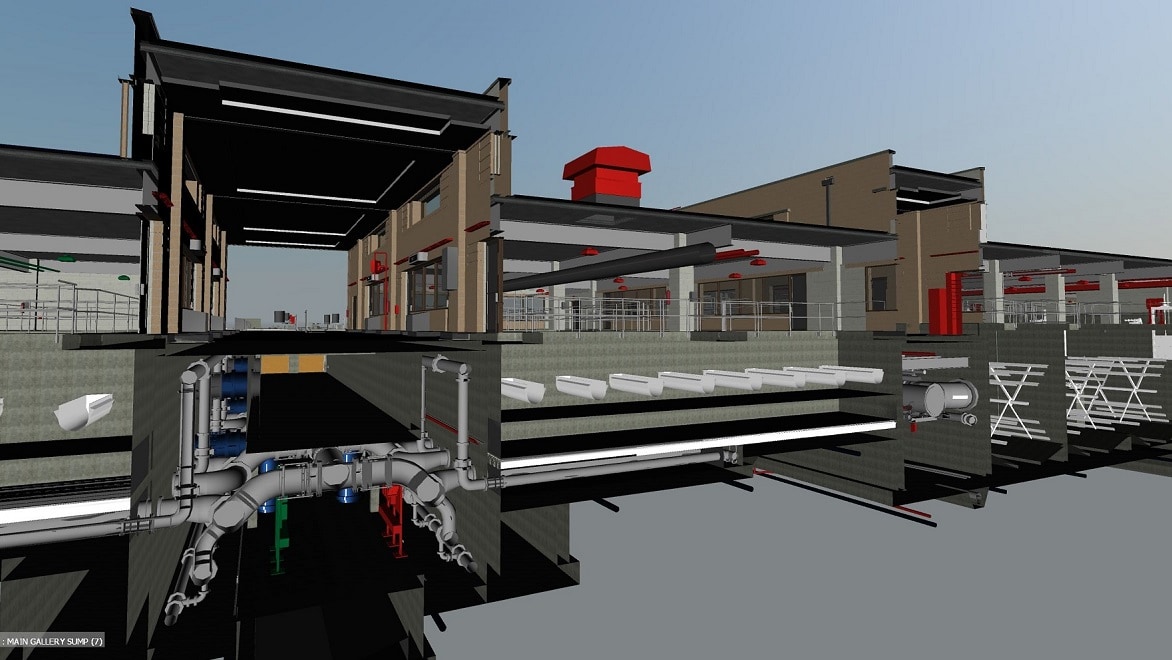
Arcadis created 3D models to design the facility upgrades, including this model of the Basin 7 main gallery that shows a piping assembly connecting treatment trains.
3D modeling sets the stage
In 2016, Arcadis began the design phase of the Collins Park expansion, tackling the two new basins together with facility upgrades, including new piping to cascade raw water through an updated multistage treatment process to purify it for consumption. First, Arcadis needed an accurate model capturing the existing conditions of the plant. With data from a site survey and 3D scans, the team used ReCap to convert reality-capture data into a point cloud and created a model in Revit. Using Infraworks, they added GIS data for the plant’s surfaces and utilities.
Over the next two years, Arcadis developed 13 Revit models for the site, integrating Navisworks and its clash detection features to find and fix errors early—and prevent costly and wasteful rework in the field. The models were also an interactive tool for reviews with the city: “You could walk through the improvements and actually show the owner what it’s going to look like in the end,” Smith says.

The 3D model of the effluent launder building shows water treatment equipment including skimmers to remove floating algae and weir launders to decant treated water for further filtration.
Reality capture to digital model
-
![]()
3D scans documented existing conditions at the plant. Using point cloud data and reality capture technology, the team created 3D models.
-
![]()
The 3D model shows placement of equipment for the flocculation basins, where coagulants are added to bond particles and impurities together so they can be more easily removed.
-
![]()
Augmented reality overlays allow team members to cross-check the 3D model with the on-site environment to assist in identifying issues with constructability.
Cloud collaboration changes the game
Like many global firms, Arcadis was concerned about the possibility of delays associated with collaboration across remote teams, including slow file downloads and lengthy email exchanges. “We had architectural, structural, mechanical, HVAC, electrical, I&C, and the civil site work—every discipline,” Nicholson says of the Collins Park project. “The usual problem is coordinating changes, trying to get everybody to adapt for the different disciplines.”
Arcadis decided to work with Autodesk on a 10-month cloud collaboration pilot: “Our goal was to see if we could save time by utilizing BIM 360 (now called BIM Collaborate Pro)—we were trying to quantify and test it on this project,” Nicholson says. The Arcadis team guided the sub-consultants through onboarding with presentations and training, and collaborated on project workflows with team members across locations from Florida to Ohio.
Virtually connecting the office and the job site
After the two-year design process was complete, the bid set went out in 2018 and the construction phase at Collins Park began. The Arcadis BIM team stayed connected with the team onsite at the plant using remote assistance sessions with live video feeds and reality capture. Arcadis also had the capacity to monitor construction progress with 360-degree photographs of the active job sites and integrate the data into a site model of record that team members could navigate virtually.
“We also used AR, augmented reality, overlaying the existing conditions with the model to assist in identifying any issues with the constructability,” Nicholson says. Using a Microsoft HoloLens headset, the construction team could use the overlays of the 3D model on site in an AR experience to verify design alignment and detect and document any differences.
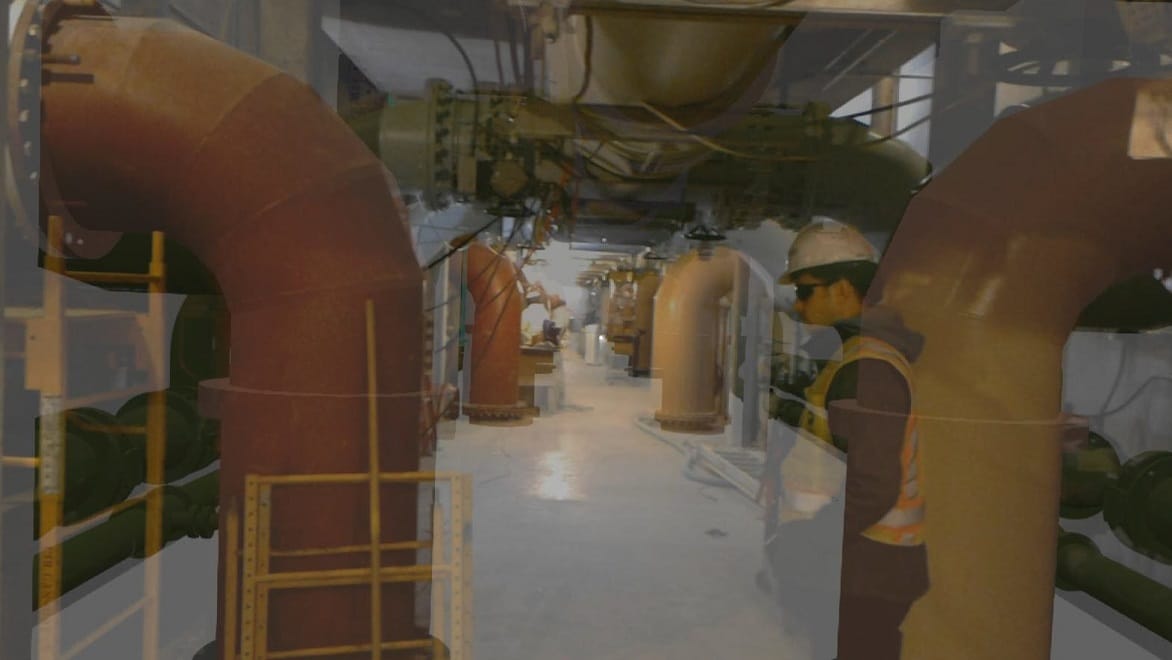
Watch the video (1:27 min.) to see the AR experience Arcadis used on the construction site to overlay existing conditions with a 3D model that enables them to check alignment with the design.
Ready for the next phase of renovation
By late 2020, Basins 7 and 8 were completed on schedule. “The 40-million gallon plant addition had to go first to gain the capacity to renovate the rest of the plant,” Smith says. “The next two projects that we’re on are the Basins 1 through 6 upgrades and then the filter pipe gallery renovation.”
As just one part of a complex 10-year, $500 million system-wide upgrade of the Collins Park Water Treatment Plant, the Basin 7 and 8 expansion was able to stay on track despite the disruption of COVID-19. While the professional construction management (PCM) firm employed by the city to oversee the larger project adjusted for restrictions on crew sizes and supply-chain issues, Arcadis didn’t miss a beat: Using remote collaboration capabilities, the design team was able to visit the job site virtually and maintain safety protocols.
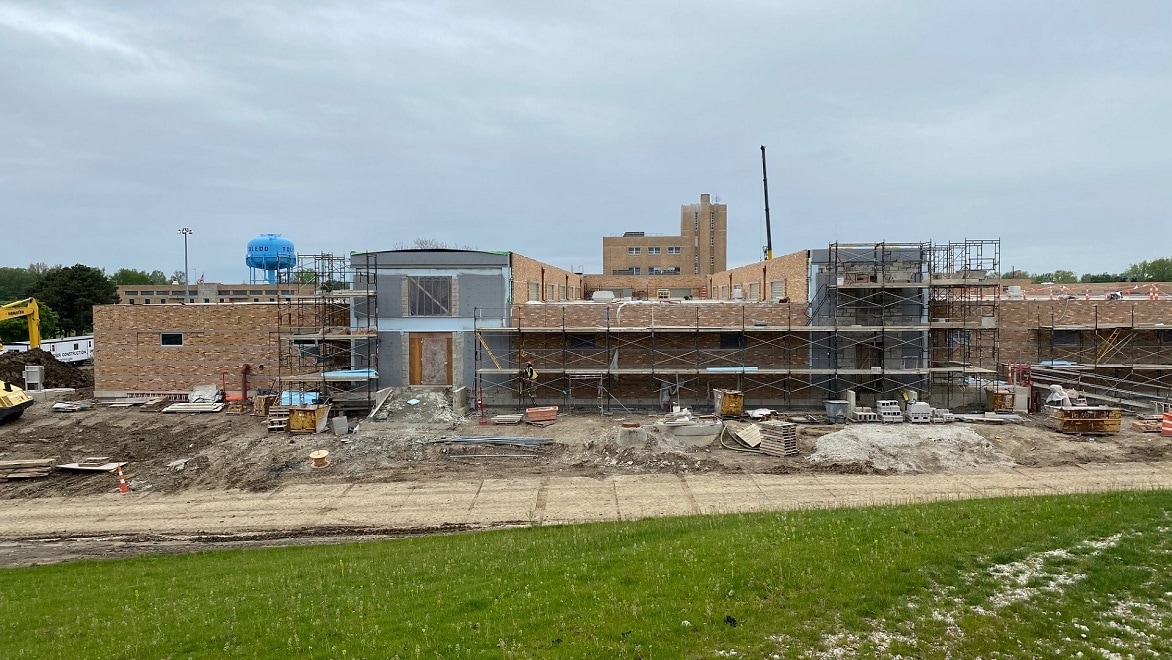
The construction of basins 7 and 8 was coordinated as part of a major 10-year upgrade to the facility.
1,000 design hours saved; a tight deadline met
By using BIM Collaborate Pro during the design process, Arcadis saved more than 1,000 design hours on the Collins Park project—making it possible to meet the OEPA’s tight bid deadline. Project coordination was improved by eliminating emails and downloads, which reduced lag time due to file transfers by 80%. Working directly with subcontractors in the cloud, everyone was able to see changes instantly.
“We got all of our subs working in a single model—for some, it was the first time they'd done that,” Smith says. “It helped streamline things, prevent errors. Everything’s up-to-date because everybody's working in the model.” With greater accuracy, contractors could provide higher-quality bids and minimize change orders and RFIs. Suppliers could prefabricate equipment offsite for quicker and more precise assembly in the field. “It saved the contractor time and money,” he says. “That, of course, carries right over to the owner with the city.”
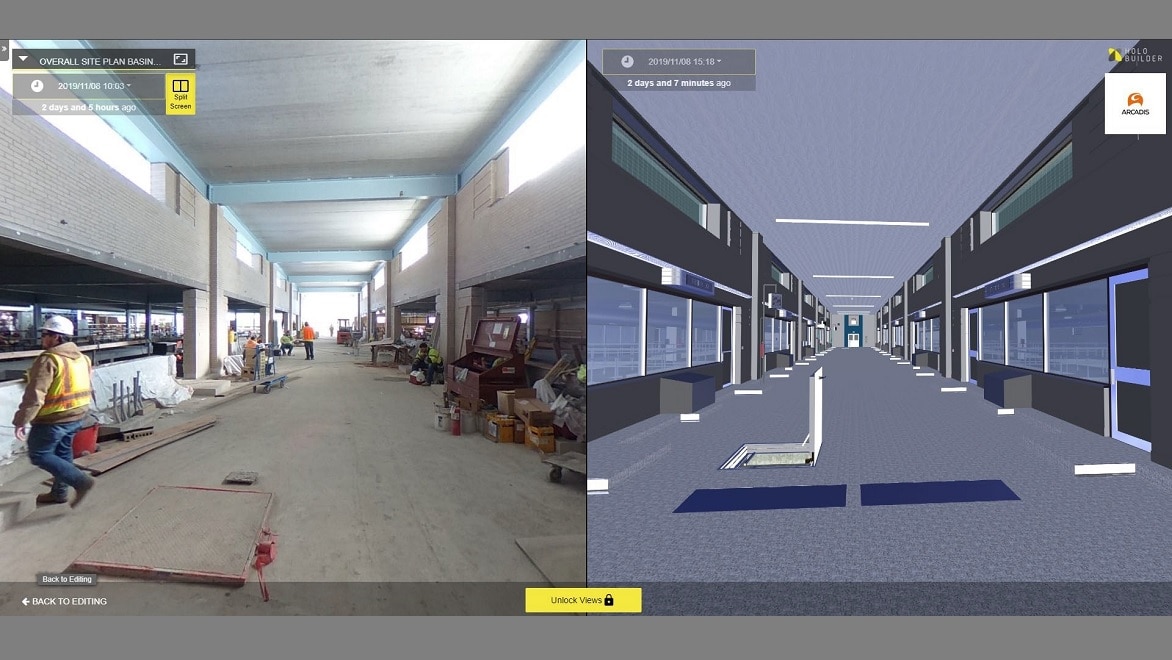
Photographs of the site and 3D models could be integrated into a 360-degree site model of record.
“This was our launching pad for using cloud-based collaboration. We were weighing the usage and seeing the benefits. The results are a win-win because every project we do now is BIM Collaborate. All our subs are doing the same.”
—Julie Nicholson, BIM Manager, North America, Arcadis
Technology supports resilient water systems
By 2023, the renovation of the Collins Park Water Treatment Plant will be complete, with all basins upgraded to technology and design standards that make the system more resilient. Arcadis will deliver an as-built BIM model that can serve as the single source of truth for plant maintenance and operations—and defend the system against harmful algal blooms to avoid a repeat of the 2014 water crisis.
Arcadis met the challenge of upgrading an aging water plant by using 3D modeling and cloud collaboration. The time and cost savings the company saw on the Collins Park project convinced Arcadis to adopt BIM Collaborate Pro and Revit across the entire global organization—and made converts of the sub-consultants working with them. By fully standardizing the improved workflows, the benefits will translate to all the company’s future water and wastewater design projects.
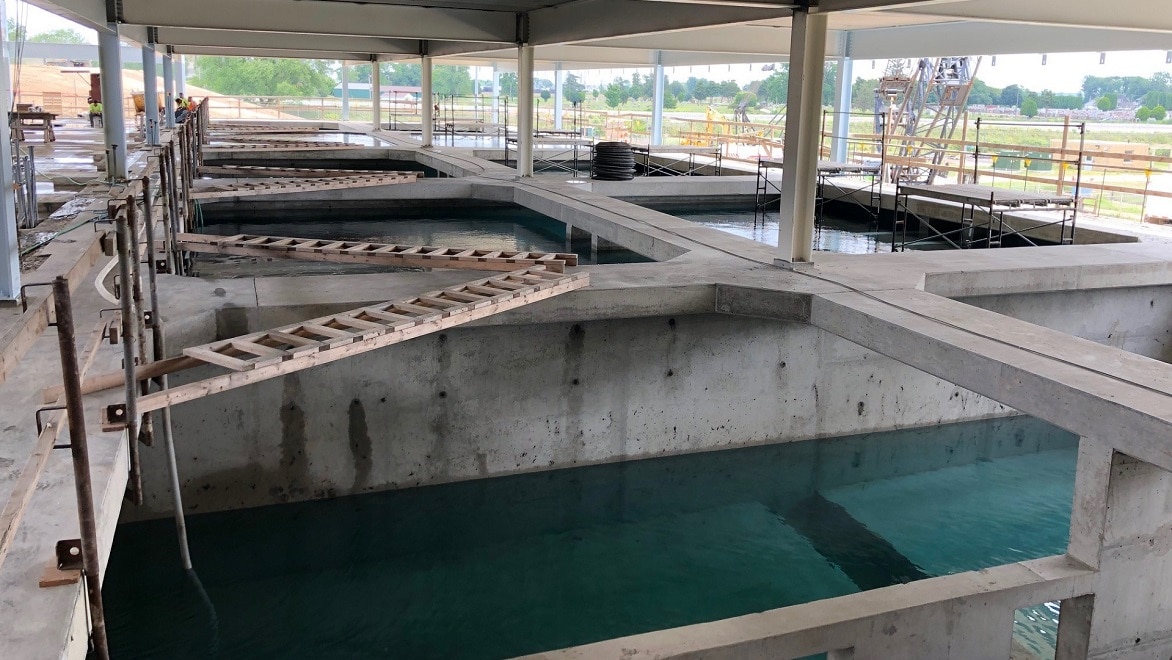
Construction of the new basins 7 and 8 proceeded on schedule, despite COVID-19 distruptions. Both basins were operational by Spring 2020, with finishing work completed later in 2020.

